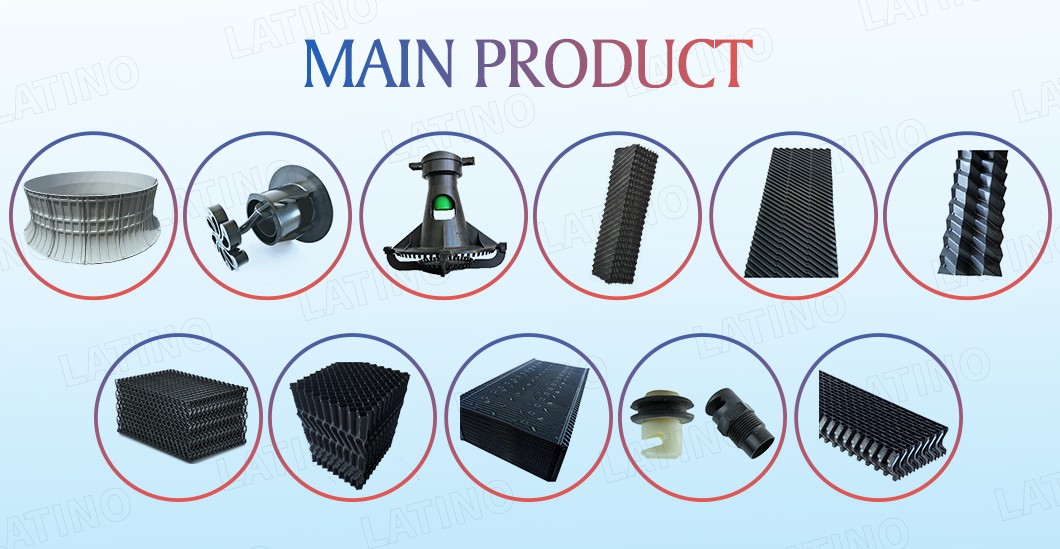
Cooling Tower MC75 PVC Fills
2020-01-20 14:40
MC75—a film fill system designed for counterflow towers offering you several distinct advantages.
• Assured Improved Thermal Performance—Crossed corrugations provide the surface area and turbulence to develop efficient heat transfer. The corrugations inherently establish uniform fill sheet spacing at 0.75".
• Durability and Quality—MC75 fill is thermoformed from .015" thick, UV inhibited, chemically-resistant polyvinyl chloride (PVC). The flame spread rating is less than 25 per ASTM E-84 and is considered self-extinguishing. The material is extruded and manufactured to rigid specifications before forming.
• Improved System Efficiency—Using Marley MC75 film fill in place of existing splash type fill in counterflow towers usually means reduced fill height, which translates into reduced pumping head. MC75 will also provide greater cooling tower capacity, which means your current performance level will require less fan energy.
• Easily Adapted to Your Tower Configuration—The fill pack depth (air travel) is variable to provide the proper heat transfer area within a single fill layer. If another layer of fill is necessary for situations where additional air travel is required, it will be limited to only one. Limiting the number of interfaces between packs minimizes restrictions that usually cause fill clogging. MC75 counterflow fill can be hung from structural members or it can be bottomsupported in virtually all counterflow cooling towers, regardless of a cooling tower’s age or manufacturer.
Fiber reinforced plastic (FRP), also known as fiber reinforced polymer, is in fact a composite material constituting a polymer matrix blended with certain reinforcing materials, such as fibers. The fibers are generally basalt, carbon, glass or aramid; in certain cases asbestos, wood or paper can also be used.
Most of these plastics are formed through various molding processes wherein a mold or a tool is used to place the fiber pre-form, constituting dry fiber or fiber containing a specific proportion of resin. After ‘wetting’ dry fibers with resin, “curing” takes place, wherein the fibers and matrix assume the mold’s shape. In this stage, there is occasional application of heat and pressure. The different methods include compression molding, bladder molding, mandrel wrapping, autoclave, filament winding, and wet layup, amongst others.
The other exclusive properties of fiber reinforced plastics include commendable thermal insulation, structural integrity, and fire hardness along with UV radiation stability and resistance to chemicals and other corrosive materials.
The characteristics of fiber reinforced plastics are dependent upon certain factors like mechanical properties of the matrix and fiber, the relative volume of both these components, and the length of the fiber and orientation within the matrix.


Tianjin LATINO Environmental Technology Co.,Ltd
